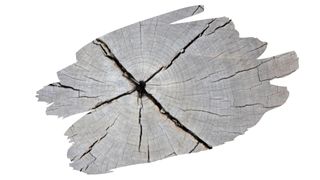Damp is probably one of the worst things for any unsealed natural solid wood surface.
If wood becomes damp, wood rot can take hold, eating away at those wood fibers. And, if left unchecked, wood rot can hollow wood from the inside out.
But what if there was a way to prevent wood rot in the first place? Well, this is where wood preservatives come in.
Wood preservatives act like fungicides, stopping mold bacteria from growing inside lumber. However, not all wood preservatives are made equal — some are much more effective than others.
So, when it comes to fighting off wood rot bacteria, how good is antifreeze at getting the job done?
Well, in this post, you will learn why antifreeze has a reputation for being a great way to get rid of mold. You’ll also discover why wood cracking occurs — and why antifreeze simply isn’t equipped to prevent it.
And keep reading to find out the best clear wood preservative for both interior and exterior wood.

This post may contain affiliate links to products that we receive a commission for (at no additional cost to you). Learn more here.
Why Does Wood Tend To Split Apart As It Dries?
It’s all because of evaporation.
When lumbers been freshly cut, (otherwise known as ‘green’ wood), it has a lot of water saturating it. This is typically referred to as the ‘moisture content’ of wood. And freshly cut timber has a moisture content of nearly 100% or so.
However, too much moisture can make wood unstable, because moisture can (and will) begin to evaporate.
This is why we ‘season’ wood before we use it. Seasoning involves leaving wood to air-dry for a number of months, until it’s moisture content falls below 19%.
Related Post: How To Season Wood (7 Tips)
But, here’s the thing; as wood dries it will start to shrink down. And if this happens too quickly — and wood dries unevenly — it will crack and split.
What’s more, this can happen even after wood has been seasoned.
For example, if a wooden board became damp — due to a leaky nearby pipe — wood will absorb that water. And, as it dries out afterward, it will contract and shrink all over again.
OK. So What Can You Do To Prevent Wood From Cracking?
The best way to prevent wood from cracking is to waterproof it before any moisture gets into it.
And you do this by coating wood with a waterproofing sealer.
The best kinds of sealants are usually urethane-based, such as polyurethane (for interior wood) or Spar Urethane (for exterior wood).
What About Antifreeze? Does Antifreeze Keep Wood From Cracking Too?
Not at all…but not for lack of trying. You see, antifreeze is sometimes used as a way to prevent mold from growing inside wood.
That is because antifreeze is an alkaline solution. And pouring antifreeze onto mold makes life difficult for mold bacteria.
And why is that? Well, it’s because mold bacteria ideally love to live in PH neutral environments. And, in some extreme cases, they can survive acidic environments too.
But, they cannot survive the kind of alkaline environment that a dousing of antifreeze will create.
Related Post: What To Do About White Mould Under Your Hardwood Floorboards
So, antifreeze is one way to remove the bacteria responsible for wood rot.
However, antifreeze won’t prevent wood from cracking because it does not solve the real cause behind those splits; evaporation.
At the end of the day, those cracks are the result of wood drying out — whether it be green wood or dampened wood.
While mold growth is the result of wood becoming damp — and staying damp for too long — in the first place.
In other words, antifreeze is a decent wood preservative, but it is not in any way going to seal wood.
Is Antifreeze Even The Best Choice Wood Preservative For Exterior Wood?
Nope, not even close. It’s more of a last-resort solution you can use to topically apply onto mold that’s already begun to grow.
However, if you want something that’ll prevent mold from growing in the first place, you should use Cuprinol’s odorless clear preservative.
Cuprinol’s Clear Wood Preserver will soak right down into wood. And underneath the surface, it’ll coat wood fibers, helping to block any further moisture absorption.
It is incredibly easy to apply. And this wood preserver also makes for a great base coat for your final top coating sealer.
But what’s really great about this product is that you can use it on both interior or exterior wood. So it can help to protect your indoor furniture too.
To Wrap Up, Here Are The 3 Key Takeaways From This Post…
- 1). Wood cracks are a result of moisture evaporation. Moisture inside wood rapidly vaporizes, causing wood to shrink and split.
- 2). Antifreeze is an alkaline solution that can be used to get rid of the mold bacteria responsible for wood rot.
- 3). Antifreeze does not prevent wood cracks. This solution does not seal wood or protect it from water damage. If you want to prevent wood from cracking, you need to coat it with a waterproofing sealant.



